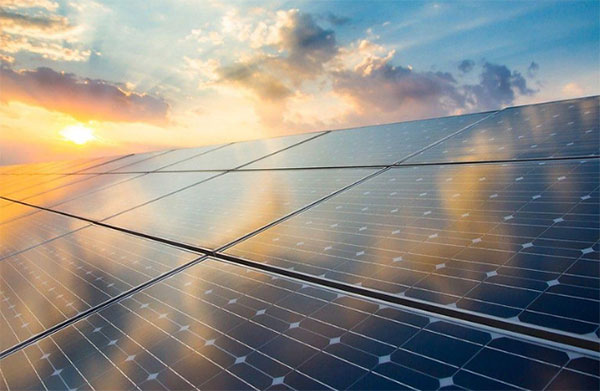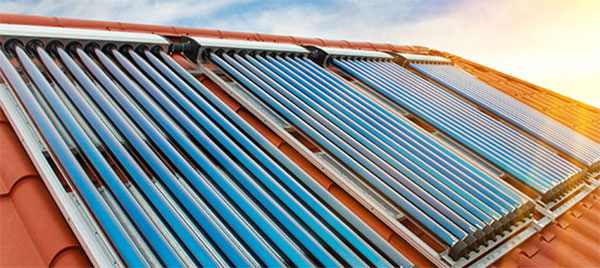Description
Solar panels convert sunlight into electricity through photovoltaic cells, where photons excite electrons, creating an electric current.What is Solar Energy?
Solar energy is the radiant light and heat from the sun that has been harnessed by humans with a range of ever-evolving technologies. At its core is the fact that solar energy is the ultimate source of most of the energy sources on earth, be it from the direct production of solar power via photovoltaics and heat to the top technologies of Concentrated Solar Power and Solar Fuels.
What are the forms of energy?
Solar energy comes in multiple forms – the many colors of the solar spectrum, ultraviolet, visible, and infrared light, its power that arrives on earth is around 173,000 terawatts hitting the earth at any one time — much more than 10,000 times the world’s total energy use. This versatility of solar energy makes it incredibly useful. Your choice of solar technology will depend on the system that your home or business was built to use, as well as zoning laws, state incentives, the aesthetics of the system, and, lest we forget, your budget. The bottom line is that solar is always evolving: hence, the fast-moving field of roof and ground mount systems, microgrids, energy storage, charging stations, home automation — and solar technologies of every stripe.
What is Photovoltaics?
They are best widely known as the solar panels Power Ninja puts atop the roofs, over parking lots, and, in a variety of form factors, elsewhere. is the technology that makes the conversion of sunlight to electricity possible in a solar cell. A “solar cell” is another name for a “photovoltaic cell.” “Photo” meaning light and “voltaic” meaning electricity. So, it’s a device that generates electricity directly from light. Understanding Photovoltaic Cells: How they do it – 12 min 40 sec These PV cells are made in thin layers from 1 of 3 primary semiconductor materials (See Thin Film ), each with distinct electrical properties. Sunlight excites the electrons in the semiconductor and thus creates current. The efficiency of the solar panels is a key issue and more iterations of this over time improves the technology.
What are the Materials & Efficiency?
The material and the efficiency of the semiconductor must be right. Most solar panels are made of silicon because it’s the most common semiconductor. The efficiency of silicon cells range between 15% and 22%. They are popular because they strike a good balance between efficiency and cost. There are advanced materials offering potential to beat silicon, however. One example is perovskite, which you can read about in an article on the solar revolution. Solar panels are obviously about efficiency, this is another metric you’re likely to run into.
Price & Lifetime?
Over the past few decades they have gotten much cheaper. They are rated in dollars per watt, and the average is around $0.50. They last anywhere from 25-30 years and there are at least a dozen on the market that outperform this generalization. This price trend is mostly heading down, but not long ago a flood of cheap solar panels coming out of China sent prices into a tailspin. As of my last ask/research the price range of solar energy to your door could be found here and would be worth comparing with another. A basic, 6,000 watt, off-grid, residential system in Chicago today is a tailor made solar plan, by far. A larger scale system to solar power a commercial building could run anywhere from $0.20 to $0.40.
Re-conceptualising Solar Panel Components
Solar panels are as much a statement of engineering existence as they are warriors on the front line of the clean energy revolution. They are collections of elements that take sunlight and leave behind electrical energy with an efficiency that belies their elegant, monolithic appearance. Beneath that surface, a structured collection of photovoltaic cells, conductive materials, and encapsulation techniques come together to convert light to power in the most effective manner science has yet devised.
Photovoltaic cells: structure and function
The Anatomy of a Photovoltaic Cell shows us a sandwich of layers with a semiconductor material, typically silicon, that is doped with other elements to create a positive (p-type) and a negative (n-type) layer. This forms a p-n junction that is crucial in the generation of electric power out of sunlight.
How Photovoltaic Cells Work begins with light striking the cell, dislodging electrons, and creating free electrons and holes. The p-n junction allows these to flow to the n-type layer, creating an electrical current. The efficiency of this process varies significantly with the cell’s materials and structure. Commercial solar cells today achieve around 15 to 22 percent efficiency, with the leaders in laboratories surpassing 25 percent. [Blogger’s note: to put that in perspective, an LED (light radiating diode) sometimes serves as a good visual analogue. Every time you see light coming out of an LED, you are witnessing the (usually inefficient) transformation of electrical power into light. A solar cell produces roughly 10 times its own capacity in power or 1,000 times the light of a visible-light LED. Not so simple or inefficient!]
Conductive materials and encapsulation
Conductive Materials are used to take the electrical current generated by the photovoltaic cells into the solar panel’s external circuit. Silver is often used for the front grid due to its excellent conductivity. Alternatives like aluminum and copper are common on the rear side of the panel. The choice of material comes down to a balance of conductivity, cost, and durability; silver is the most conductive but expensive.
Encapsulation and Protection are layers that protect the photovoltaic cells from environmental conditions, such as moisture and physical means of degradation, while admitting the maximum useful light. EVA (ethylene-vinyl acetate) is often used for its transparency, adhesive qualities, and durability. Solar panels have a lifespan of around 25 to 30 years, and the capacity of these layers to protect their photovoltaic cells is the most significant contributor to that longevity.
The Costs and Benefits are difficult to overstate. High quality silicon, conductive materials, and encapsulation materials can significantly increase a panel’s efficiency and durability. The increase in lifespan this will provide is difficult to measure, but its advantage probably won’t be just that the initial cost is higher but will pay off in the long run due to energy output, cost savings, and replacements.
The Transformation from Sunlight to Electricity
The transformation from sunlight to electricity is a remarkable result of modern technology and science, based on a process known as photovoltaics. This complex process is realized within a solar panel, as sunlight is absorbed, electrons are excited, and these energized electrons are navigated through a p-n junction, all resulting in the generation and collection of electrical current.
Light Absorption and the Exciting of Electrons
Capturing Photon Energy: When sunlight - a stream of photons - strike the surface of a photovoltaic cell, a fascinating process is initiated. The silicon, the major material in most solar cells, absorbs the photons, each of which holds a quantum of energy. However, the key to this process is the energy level of the photons upon arrival; they need to carry just the right amount of energy to excite electrons in the silicon from their resting state to a higher energy state, resulting in the creation of what are called 'free carriers,' without which no electrical current can be created.
The Absorption Efficiency: The efficiency of this process depends on the material’s ability to absorb the sunlight and convert it to electrical energy. The silicon solar cells available to-date on the commercial market can convert only 15% to 22% of the sunlight they absorb into electrical energy. Innovation in materials continues, however, and efficiencies reported in the laboratory have reached above 25%.
The Movement of Electrons and the P-N Junction
Creating an Electric Field: In moving, the excited electrons are directed by the p-n junction. This junction, a boundary or interface between p-type and n-type semiconductor materials, creates an electric field, which functions as a one-way gate: It allows electrons to pass from the n-type side to the p-type side, but not in the reverse order.
Electric Field Generates Current: This electric field is vital as it provides the force needed to drive excited — i.e., energized by the sun — electrons out of the solar cell and into the external circuit where they can do work flowing through your electrical wires providing electricity to power your home or business or charge a battery.
Collection and Conversion: Those electricity-generating electrons must first flow out of the cell via metal contacts on the top and bottom of the cell that are positioned to facilitate the flow. In other words, they act as collection grid lines at the surface, acting as electron highways for collection and then exit points for a solar cell in the electrical current they are creating. To generate the most electricity possible, solar panels can be connected in series or parallel to ensure the voltage and current produced match the electrical system’s needs. The overall power output of a solar panel is measured in watts based on its size and efficiency of the solar cells in it. A typical residential solar panel is about 250 to 400 watts under ideal conditions of direct sunlight.
- “Semitransparent” Conductor Boosts Power Conversion
- “Incompetent” Material Powers Electric Car PHOTOS
- New Material Boosts Solar, Electronic Devices
Advances in solar cells have made this technology a more likely candidate.
Current Trends in Solar Cells, A Guide to Semiconductor Technologies
Solar power generation is a technology that has been around for only a few decades, but its use is growing rapidly. The installed capacity of photovoltaics has been increasing at about 60 percent per year since 2000, leading to a 95 gigawatt industry in 2011. Solar cells are now a major industry with a global market of more than $30 billion per year; the technology has advanced rapidly over the last few years and the production volume has increased dramatically. Solar cells may eventually even become an important source of electrical power given that they are environmentally friendly and have superior safety features.






